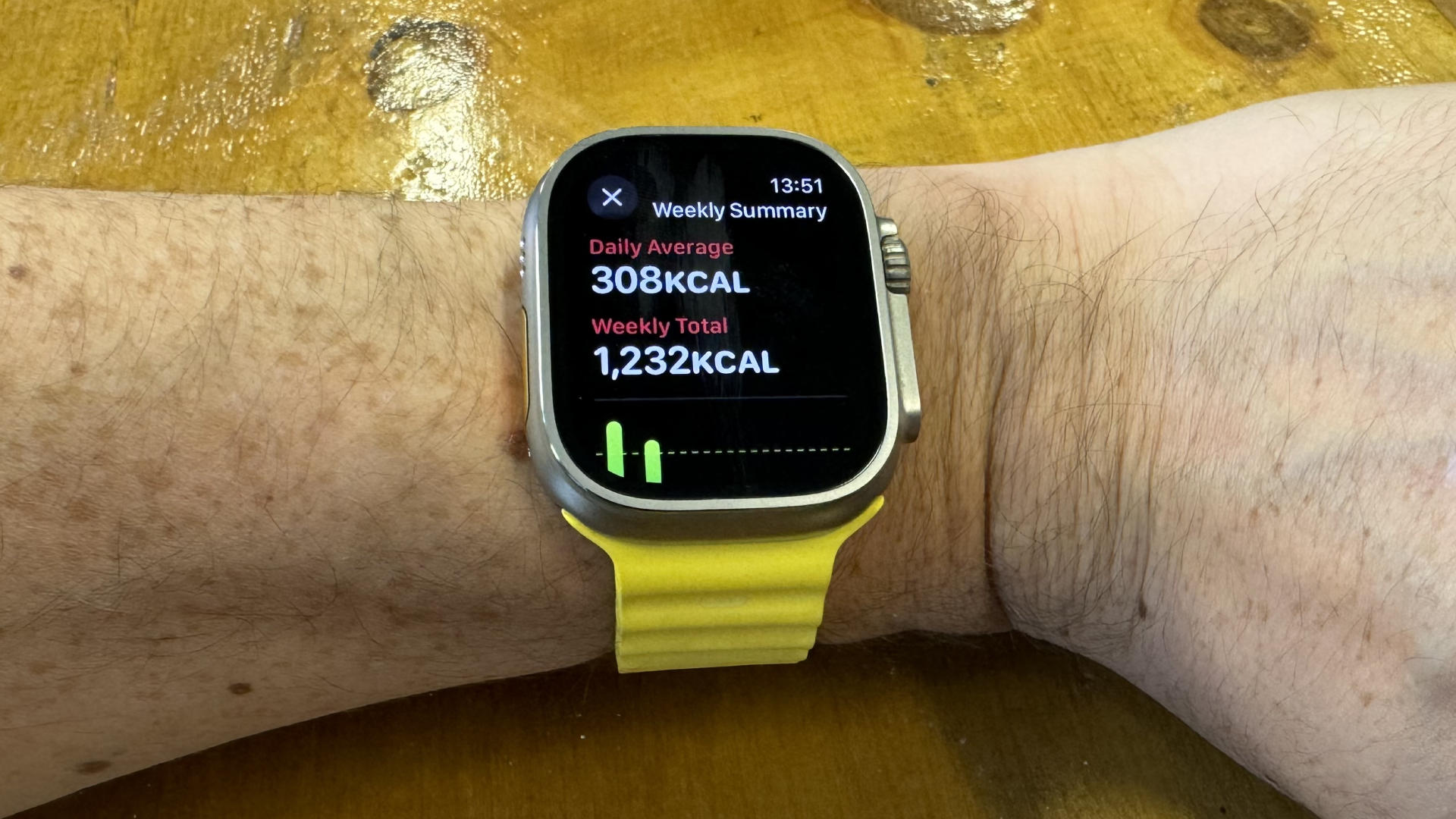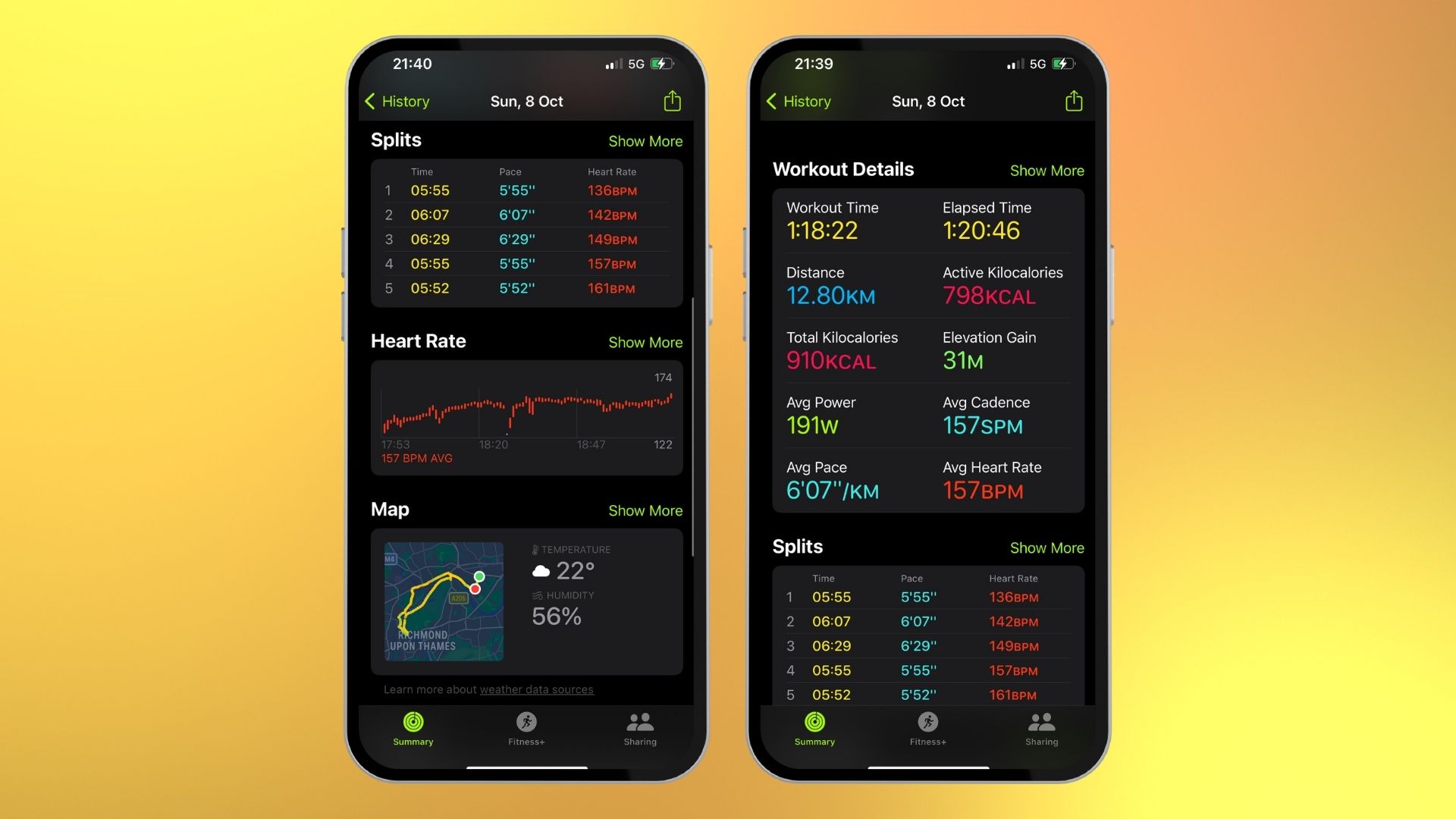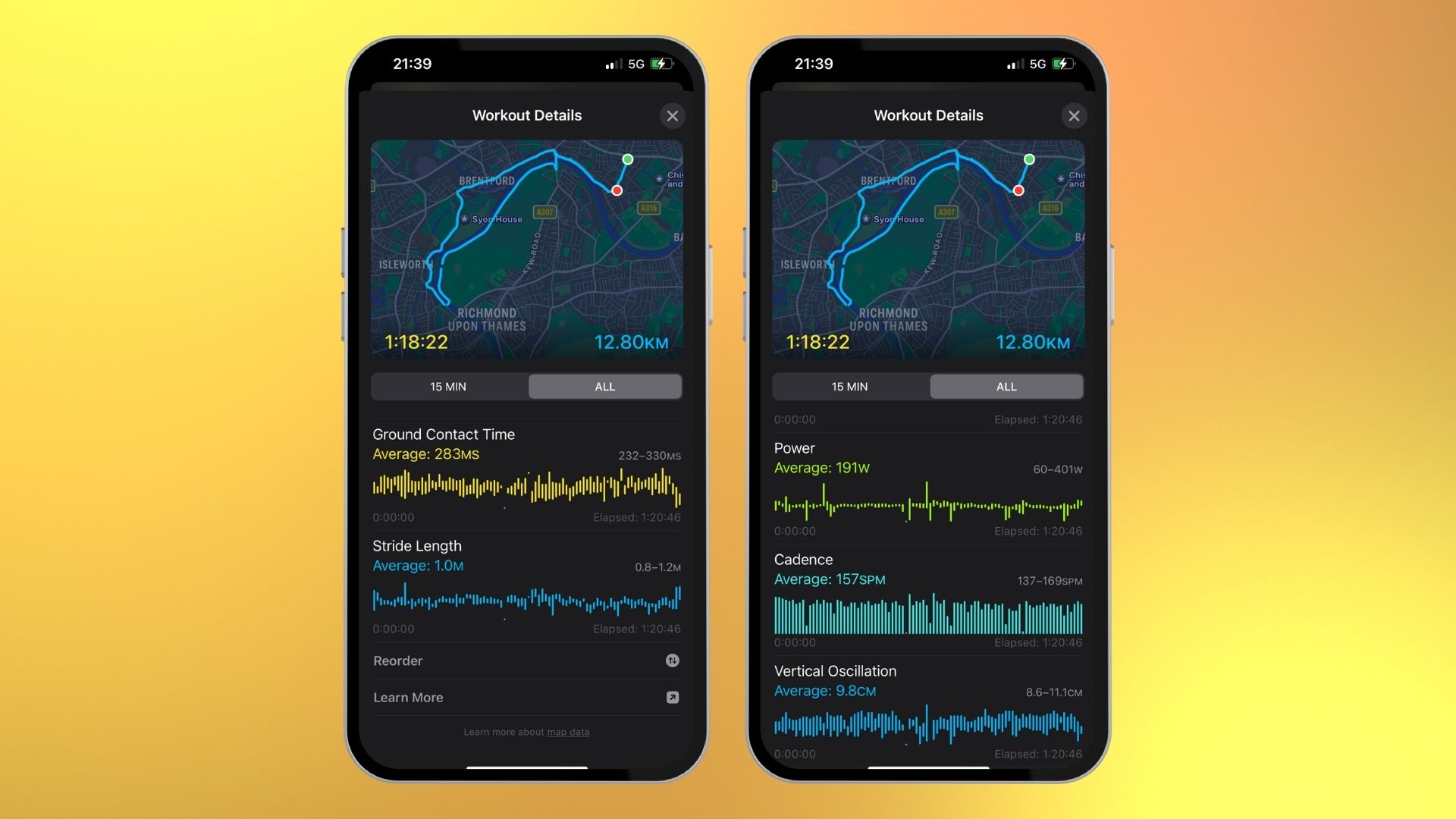
When you go for a run with your Apple Watch, you probably notice that (ever since watchOS 9 debuted in 2022, at least), you get served a lot of different numbers beyond the simple metrics of distance, time, and calories burned.
With this in mind, here's a simple breakdown of all the metrics on offer, from elevation to stride length. It’s a great way to understand as much as possible about how you run - and once you understand how you run, you can take steps to improve it.
Workout time, distance and pace
These are fairly easy to explain. Time and distance are, of course, how long your run took to complete and how far you traveled, respectively. Using these two statistics, your watch provides your pace, which is how fast you’re traveling at any given moment.
During exercise, the watch gives you an average pace of how fast you’ve been moving at the moment, and a “rolling pace”, which is just for the last mile or kilometer you’ve run. After you complete the run, however, you’re given ‘split pace’ information, which shows how fast you ran for each mile/kilometer of your workout.
Active & total kilocalories
How many calories you’ve burned during exercise. The term ‘kilocalories’ is pretty much interchangeable with ‘calories’ but more scientifically accurate, so Apple uses kcal here. Active kilocalories show you how many calories you burned specifically while working out, while total kilocalories include any rest periods you may have taken.
You still burn energy even at rest – and after exercising, your heart is working hard pumping blood to your muscles, so you’re going to be burning even more for ages after you’ve finished.

Elevation
Elevation is measured using map data and, where necessary, your Apple Watch’s barometer. It will show you how far up or down, compared to sea level, you traveled during your run. Using your Apple Watch, you’ll be able to see how far above sea level you are at a glance.
This is quite useful for trail runners, who frequently scale mountains and descend into valleys. After you’re finished, by hitting ‘Show More’ in your workout summary you’ll be able to see a bar graph plotting where you were along that third axis at various points during your run.
Running Power
Running power is an alternative metric to heart rate, which you can use to estimate how much effort you’ve expended during your run. Running power – like electric power – is expressed in Watts. The more Watts your running power stat is expending, the harder you’re working.
Typically, cyclists use power a lot, with power meters attached to the bike’s pedals, and runners have been able to use power meters attached to their shoes or chest-mounted heart rate monitors. However, starting with watchOS 9’s release in 2022, running power can be generated using just your Apple Watch’s sensors, with no external kit necessary.
Your current running power can be seen on your Apple Watch during your workout. It’s an all-purpose metric incorporating heart rate, speed, and distance, so if you have a target running power in mind to help you reach a certain time, you only have to pay attention to one number. Like other metrics, you also get a timeline of how much power you were expending at various points throughout your run under the ‘Show More’ tag in your workout summary.
Cadence
Cadence shows several steps per minute, or SPM, you take on average during your run. This can show how efficient you are during your run and correlates with how fast you move.
According to a study from the Journal of Applied Physiology, the average number of competitors in the 2016 100-km World Championship road race was 182 SPM, and those who took more steps per minute tended to be faster.
If you want to improve how fast you run, this is important information. If you’re trending at under 155 SPM according to your Apple Watch, focusing on fitting in a few more steps might help make you a faster runner. Generally, for amateur runners, over 155 SPM is probably fine, but consult an expert running coach if it’s something you want to really improve on.

Vertical Oscillation
Vertical oscillation, measured in centimeters or cm, is an estimate of how much you move up and down. It’s not about how many steps you climb: it’s how much you bounce while you run. Bounce too high, and it’s wasted energy, as you’re propelling yourself upwards instead of forward, so you should aim to curb excessive vertical oscillation. Research has also found that lowering your VO has the potential to reduce your risk of injury.
However, everyone naturally bounces a little bit as they step, so you’ll never get this too low. The guidance on this is hard to pin down. A vertical oscillation of under 10cm is probably fine for recreational runners, but again, we recommend talking to a reputable running coach if VO is something you want to work on.
Ground Contact Time
Ground contact time is a metric that tells you how long your foot spends, on average, in contact with the ground with every step. This might seem pretty esoteric, but as your speed increases, your ground contact time naturally decreases. Together with cadence, it’s a good indication of how fast you’re moving at any one time.
Training specifically to reduce your ground contact time can improve your running: after all, if you’re picking your feet up more often, you’re taking more steps per minute, which means you’re moving faster.
Research has found that contact time tends to increase when runners are slower, and decrease when runners are faster. Although you can only go so fast if you’re looking to run longer distances, like a marathon, looking to shorten your ground contact time can pay off if you’re looking to set a personal best.
Stride length
Stride length is pretty simple: in meters, how long are your steps?
First introduced in watchOS 9 along with other advanced running metrics, your Apple Watch uses your arm movements to estimate your stride length across any run of 200 meters or more. Stride length is tough to think about and change on the run, as it also affects your cadence and ground contact time. The three metrics have to be considered together if you’re going to change your running gait.







